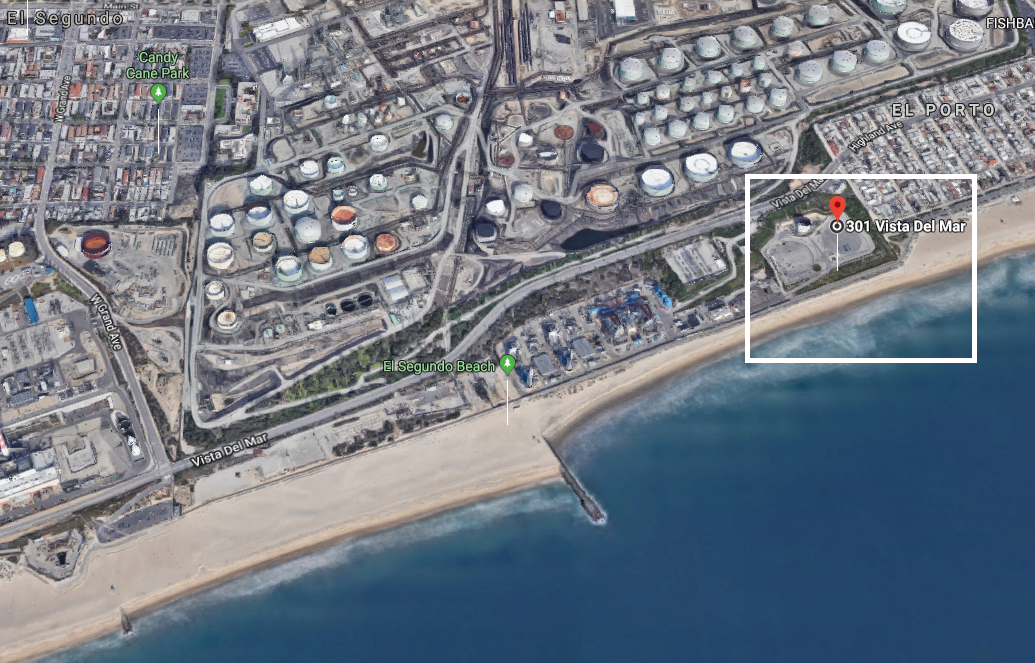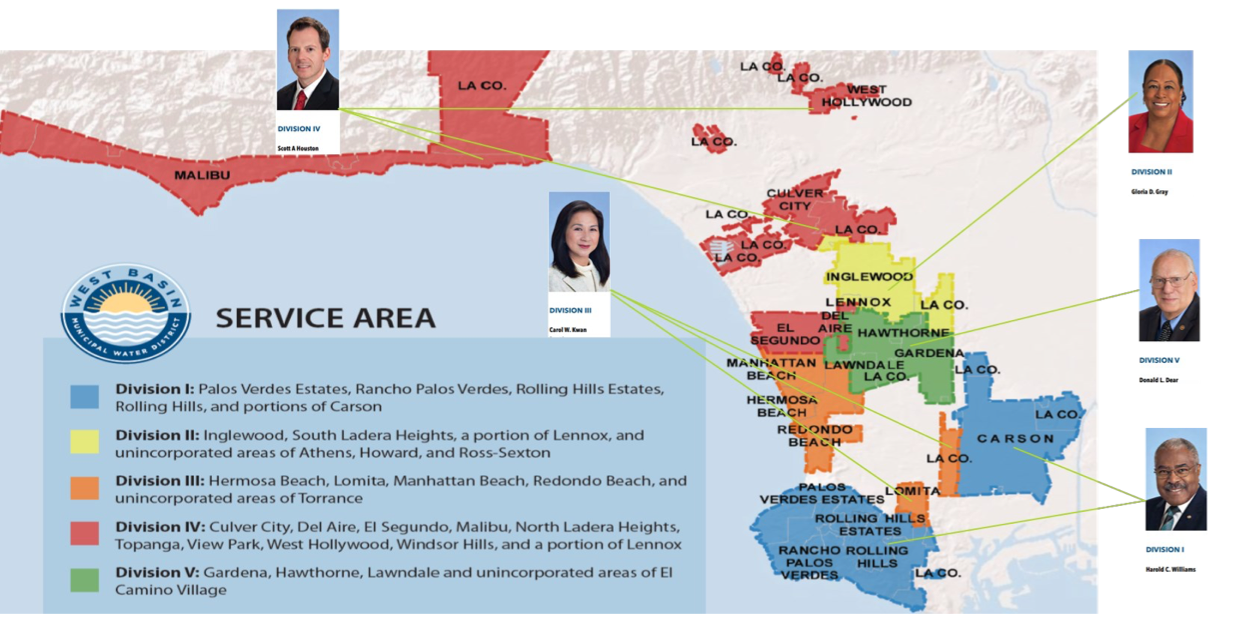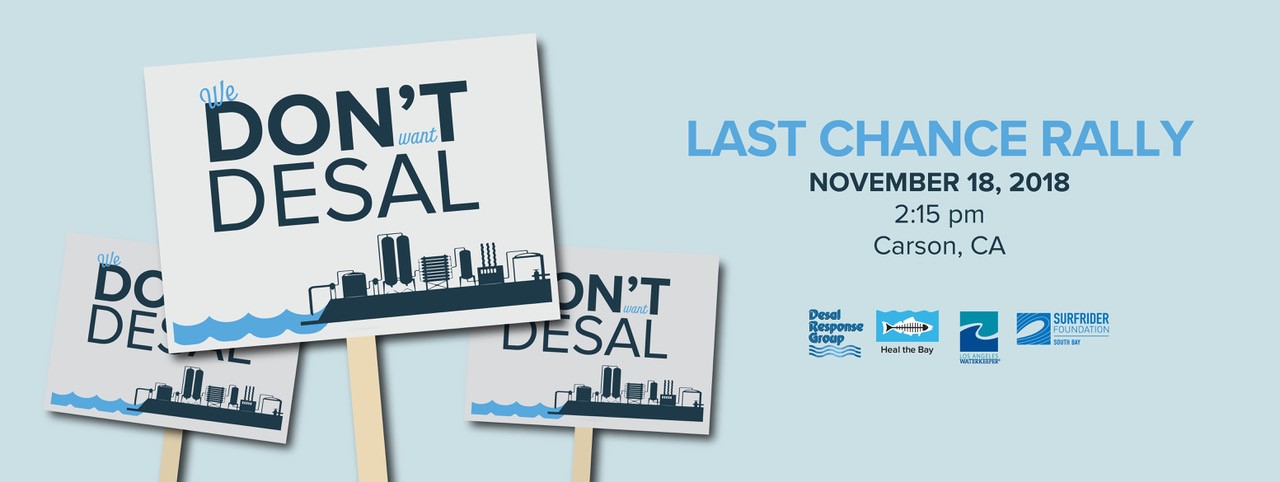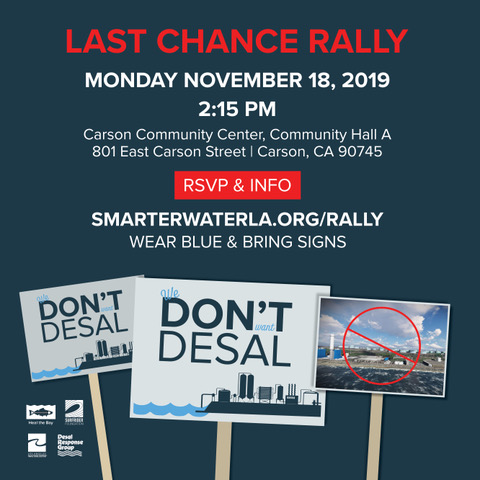RALLY ALERT: Last Chance to Oppose Ocean Desal in LA

Nancy Shrodes, Associate Director of Policy and Outreach at Heal the Bay, shares our top five reasons for opposing an ocean desalination plant in the Santa Monica Bay. Join our Anti-Desal Rally on November 18 — this is our LAST CHANCE to speak out against the proposed $480-million dollar plant that will literally suck the life out of our Bay.
West Basin, a water wholesaler for seventeen cities serving nearly one million people in LA County, is proposing to build an ocean desalination plant in the Santa Monica Bay.
West Basin released their Final Environmental Impact Report (FEIR) on October 23, 2019 for a local plant that would produce twenty million gallons-a-day (MGD), and potentially an expanded regional plant at sixty MGD. It would be placed adjacent to the coast in El Porto, using some decommissioned infrastructure from the El Segundo Generating Station (ESGS) located at 301 Vista del Mar in the City of El Segundo, California.

Why we oppose ocean desal in LA
Ocean desalination currently does not exist in the Santa Monica Bay, and its arrival would bear concerning consequences for the Bay. Heal the Bay joins many other NGOs, municipalities, state agencies, and individual community members voicing concerns about the project. We oppose the proposed ocean desalination plant for the following reasons.
1. Desal is the MOST expensive and energy intensive form of water.
It is even two times more expensive than our imported water supplies that come from the State Water Project and the Colorado Aqueduct, which travel hundreds of miles to be delivered to SoCal. In fact, just moving water from Northern California up and over the Tehachapi Mountains is the single biggest energy use in the entire state, but ocean desalination uses more energy! And in the midst of our climate crisis in which we have an eleven year ticking clock, choosing ocean desalination (the most energy intensive form of water) to augment our water supply, would be a big step in the wrong direction.
2. Ocean desalination negatively impacts marine wildlife through both the intake of ocean water and the disposal of what’s left over after desalination, called “brine.”
West Basin is proposing an open ocean intake pipe with a screen, despite the fact that subsurface intake (a less harmful method of water intake) is recommended in the State’s Ocean Plan. In open ocean intake, small larval stage animals can be sucked into the system despite the screen (entrainment), and small fish that cannot fight the velocity of the intake water (at thirty feet per minute) can get stuck against the screen (impingement). The brine left over from desalination is extremely salty, and also contains any contaminants like metals that were in the ocean water originally as well as chemicals used in the desal process. This extremely concentrated brine water is disposed of via jet diffusers back into the ocean, which can be very toxic to marine organisms. As salt is much denser than freshwater, the discharged brine can accumulate and pool along the ocean floor. Considering the negative impacts of such a project, Heal the Bay believes ocean desal should only be used as a last resort for the region.
3. West Basin’s project is currently unfunded, which means that ultimately the price tag will lie with the ratepayers themselves.
West Basin currently quotes the project at half a billion dollars, but as we saw with the Carlsbad Poseidon plant, it’s likely underestimated. Ocean desalinated water from Poseidon ended up being four times more expensive than their original projected cost per acre foot of water. And the high cost of water is an environmental justice issue. West Basin has already had high costs in their environmental review process totaling $60 million to $80 million to date.

West Basin’s Service Area includes: Carson, Culver City, El Segundo, Gardena, Hawthorne, Hermosa Beach, Inglewood, Lawndale, Lomita, Malibu, Manhattan Beach, Palos Verdes Estates, Rancho Palos Verdes, Redondo Beach, Rolling Hills, Rolling Hills Estates, and City of West Hollywood.
4. Ocean desalination should be an absolute last resort.
What about other places that have pursued ocean desalination? Santa Barbara commissioned a plant that was built in 1991 as an emergency response to drought. After four months of use, it was mothballed when the rains came because rainwater provided a much more cost-effective source of water. A similar situation happened in Australia. During a historic twelve year drought, they built six ocean desal plants. Four have since been decommissioned. Although Santa Barbara has turned their plant back on and Australia, in the face of another drought, is considering recommissioning a plant, it’s not without significant costs (you can’t just flip a switch to turn back on an idle plant). There are other places, like Israel, who have excelled in conservation and recycle almost all of their water, but still can’t meet their water demand. Since Israel had no other choice to meet their demand, they turned to desalination. Only as a last resort, once all alternative water sources are exercised to the fullest extent, should ocean desal be considered.
5. There are much more cost-effective and environmentally friendly alternatives that we can pursue.
- Conservation is the best choice—the cheapest form of water is water not used. LADWP customers averaged eighty gallons per person per day (gpd), while some water customers in LA County use upwards of two-hundred gpd. After Australia’s twelve year drought, residents upped conservation efforts and now operate around forty-five gpd. Needless to say, we still have a long way to go towards conservation and efficiency.
- Stormwater capture is another amazing source of local water. In an average one inch rainstorm in LA, ten billion gallons of water rush through our city streets, pick up pollution, and are sent straight out to the ocean. For a region that gets ten to eleven inches of rain per year on average, that’s a lot of local water we can take advantage of. Luckily, in November 2018 we passed Measure W, which provides funding to create and maintain stormwater capture projects! The Safe, Clean Water program is well on its way to cleaning up our water and putting it to good use.
- Water recycling and groundwater augmentation are other great options. In fact, West Basin has been a leader in Wastewater Recycling, and we would love to see them continue in that direction. And just this year, Mayor Eric Garcetti announced 100% water recycling in Los Angeles by 2035! It makes no sense to clean the wastewater up well enough to discharge into the ocean, only to pull it out of the ocean further south. Cut out the ocean middle man with wastewater recycling. We need to continue to cleanup any contaminated aquifers, and recharge our local groundwater storage that we are so lucky to have plenty of in the region.
For these reasons, among others, the Smarter Water LA Coalition is asking West Basin to not certify their FEIR or move forward with the project. The draft EIR resulted in more than two-hundred comments from NGOs, municipalities, state agencies, and individual community members voicing concerns about the project, many of which were not adequately addressed in the final EIR. Ultimately, the five publicly elected Board of Directors will decide if they should move forward with the project or not.
Make your voice heard
Join us on Monday, November 18 at 2:15 pm in Carson for a Rally and the Special Board meeting to let West Basin know how you feel. This is our LAST CHANCE to oppose the ocean desal plant in El Segundo! Remember to wear blue, and bring your anti-desal signs.
Can’t attend our Rally or looking to spread the word? We recommend taking the following actions BEFORE November 18 to make your voice heard:
- Send your concerns to West Basin directly by email
- Sample Email: I oppose an ocean desal plant in El Segundo for the following reasons: Desal is the MOST expensive and energy intensive form of water. Ocean desalination negatively impacts marine wildlife through both the intake of ocean water and the disposal of what’s left over after desalination, called “brine.” Your project is currently unfunded, which means that ultimately the price tag will lie with the ratepayers themselves. Ocean desalination should be an absolute last resort. There are much more cost-effective and environmentally friendly alternatives that we can pursue. I strongly urge West Basin’s Board of Directors to NOT build this proposed plant. Sincerely, YOUR NAME, YOUR CITY
- Tweet at West Basin with your concerns
- Sample Tweet: We Don’t Want Desal in the Santa Monica Bay! Ocean desalination is the MOST expensive, energy intensive and environmentally harmful way to get local water. Desal doesn’t belong in LA. I urge @WestBasin to NOT build this proposed plant.

- Retweet this post: https://twitter.com/HealTheBay/status/1191511709229502464
- Share with your network on Facebook and Instagram:
- I oppose an ocean desal plant in El Segundo. That’s why I’m joining Heal the Bay at their Anti-Desal Rally on Nov. 18. Desal is the MOST expensive and energy intensive form of water. Ocean desalination negatively impacts marine wildlife through both the intake of ocean water and the disposal of what’s left over after desalination, called “brine.” Ocean desalination should be an absolute last resort. There are much more cost-effective and environmentally friendly alternatives that we can pursue. Join me at healthebay.org/desalrally



